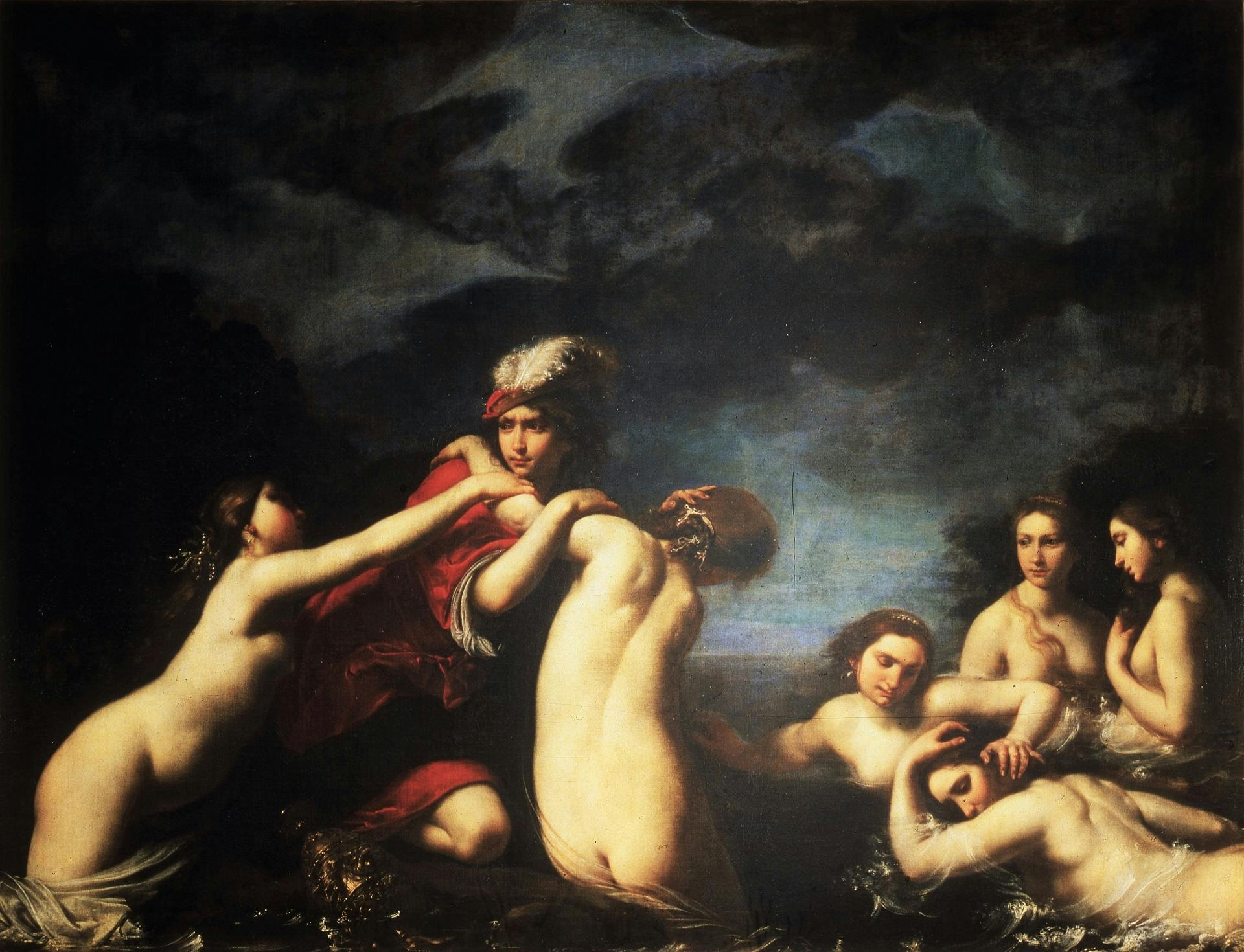Hylas and the Nymphs
Francesco Furini (Florence 1603-1646)
This work, unanimously considered by critics as a masterpiece of Furini’s early maturity, was commissioned from the artist by rich Florentine banker Agnolo Galli. This is recalled by biographer Filippo Baldinucci (1681-1728), who describes the painting using these words: “too beautiful and too lifelike, his painting for Agnolo Galli, in which he depicts a young Hylas and bathing Nymphs, all nude and in various positions.” The episode is an iconographic rarity in 17th-century painting, and takes its inspiration from the Argonautica by Apollonius Rhodius. Hylas was Heracles’s young squire on the Argonauts’ expedition to Colchis in search of the golden fleece. His adventure, however, was over long before he reached his destination, as when he stopped to drink from a spring, he was kidnapped by nymphs and disappeared in the water. Furini’s skillful composition, with its sensual weave of bodies that seem to twist rhythmically in a dance, depicts the moment in which two nymphs wind themselves around the young Hylas’s neck, while the group of nymphs on the right shows expressions of disappointment. The charming nocturnal setting, under a threatening lapis-lazuli sky with skilfully created lighting effects that mould the sinuous naked bodies, all accentuate the drama of the scene. This great painting marked a turning point in Furini’s career, due to its balanced combination of ideal and natural beauty. It was only in 1928 that the painting was placed in the Palatine Gallery, following a series of complex vicissitudes that even saw it part of a private collection in Scotland before it was purchased by the Italian government in 1910.
